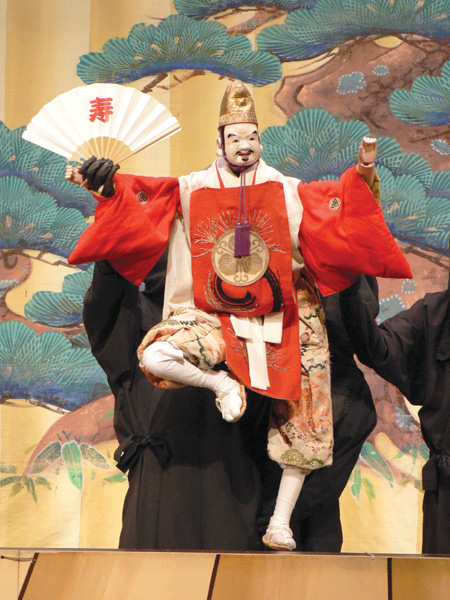
Children see and play with all sorts of puppets: Finger puppets, hand puppets, sock puppets, marionettes and even Muppets.
But what about Japanese Bunraku puppets?
This type of puppetry is an ancient Japanese art form. It involves not only puppeteers, but also chanters and musicians. The musicians play the shamisen ‘- a three-stringed instrument ‘- with a pick.
Although the
Bunraku puppets can range anywhere from 2- to 4-feet-tall. While most tend to be on the smaller side, the puppets in the Awaji tradition are typically closer to 4-feet-tall. The Awaji style of the theater also undergoes quick changes of scenery as well as costume.
The design of these puppets is elaborate. While the puppeteers themselves often construct the puppets’ bodies, the heads are carefully carved by specialists. The costuming is also intricate ‘- puppets so large require costumes on a similar level to those worn by people.
Even the manipulation of the puppets is complicated, with most requiring up to three puppeteers. The least experienced puppeteers control the feet, while the veterans move the hands. The puppeteer in control of the feet is called the ashizukai, the one controlling the left hand is the hidarizukai or sashizukai, and the one controlling the right hand is the omozukai.
The puppeteers are not hidden behind panels and instead perform in plain view of the audience.‘ In contrast with the brightly colored puppets, the puppeteers wear all black so that the focus will remain on the puppets. In some companies, the puppeteers wear black hoods as well.
Begun in the 16th century on
Bunraku puppetry was once in danger of being lost in the early 19th century, but was reestablished by a puppeteer named Uemura Bunraku-ken, from whom the style gets its name.
Now, Awaji Puppet Theater has been deemed an ‘Intangible Folk Asset’ under Japan’s Cultural Properties Protection Law.
Miguel Romero, a professor in the University of Massachusetts’ theater department, will be giving more background information about Bunraku puppetry prior to the performance.‘ Romero visited the Awaji puppet theater in
Despite the childish associations most people have with puppets, the performance this Saturday will delve into some difficult subjects.‘ The Awaji Puppet Theater Company will perform three separate pieces.‘ While one, a celebratory dance of the Japanese fisherman god, is indeed lighthearted, the other two tread on more intense subject matter.
The dance piece Hidakagawa Iriaizakura involves a woman tormented by love who is turned into a serpent consumed by jealousy.
Tsubosaka Reigen-ki, the final piece, involves a double suicide of husband and wife.‘ The piece does have a brighter side, however, as much of the action revolves around a miracle that returns the couple to the land of the living.
For those who are more ‘hands-on’ than visual learners, the Awaji Puppet Theater Company will also have a workshop this afternoon where attendees can learn how to handle the Awaji puppets.‘ The workshop will also have a question and answer section.
Whether one attends the workshop, the performance or both, Awaji Puppet Theater offers a unique experience of puppetry seldom seen in the
Awaji Puppet Theater will be held at Bowker Auditorium on Saturday, Feb. 28, at 8 p.m.‘ Admission is $20 for the general public and $15 for Five College students.‘ The hands-on lecture/demo will be held at the Curtain Theater today, Friday, Feb. 27, from 3 p.m. to 5 p.m.‘ The demo is $10 for the general public and free for
Michelle Fredette can be reached at [email protected]






